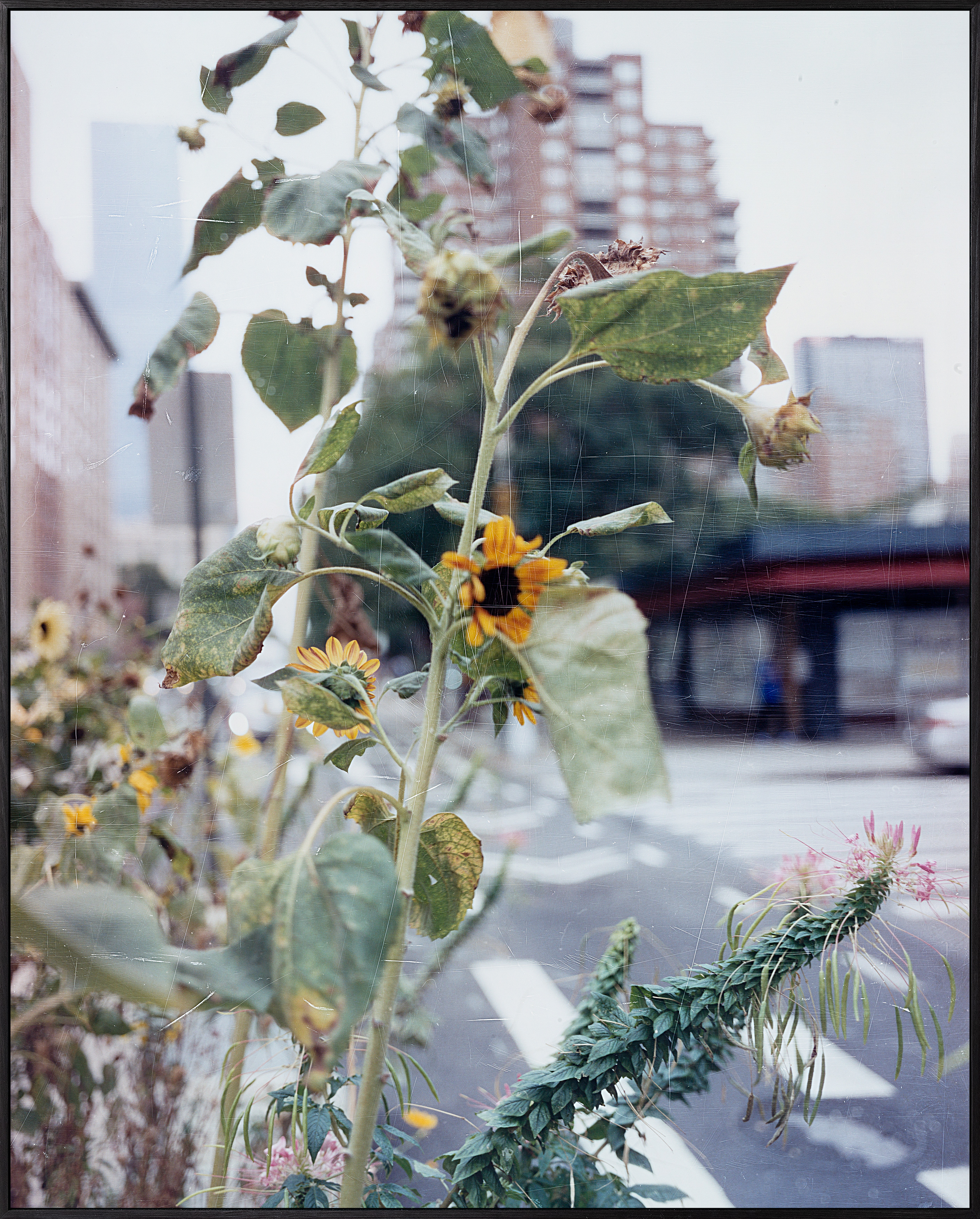Spring 1883 Art Fair, presented by Haydens
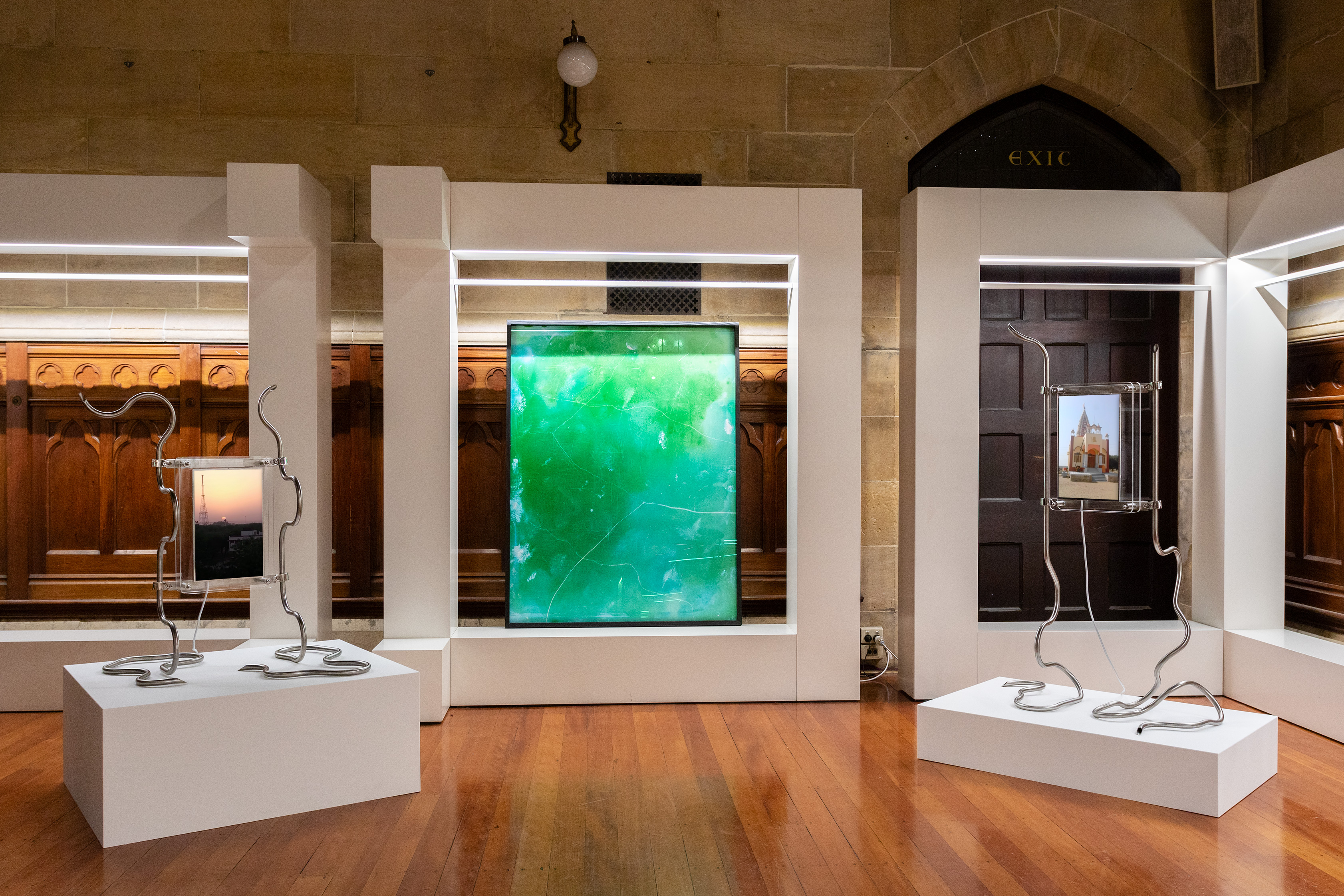



Alpha60, Chapter House Lane, 195 Flinders Lane
How can we begin to analyse and reflect on the complexities of our contemporary society? INTERFACE represents a threshold, a shared boundary where we exchange with an interconnected, technological world.
How do we perceive this threshold? Ubiquitous images we engage with on a daily basis present an unstable reality. These images have a physical materiality, and when this physicality is manipulated, we are reminded that reality is distorted through the lens. The photographs of Guy Grabowsky highlight this through his transposition of analogue photography and its abstraction in darkroom processes.
Creating a product to boost efficiency and minimise time spent away from keyboard (AFK), Soylent’s meal replacement product has streamlined our food consumption so we can better spend our time contributing to global flows of exchange in a stereotypical Silicon Valley tech-based lifestyle. Jordan Halsall utilises this product to explore the simultaneously sinister and liberating potentials of ‘hacking the body’.
Videos submitted by the human workers of Amazon’s Mechanical Turk reveal the lives of those responsible for training artificial intelligence (AI) how to ‘think’. Through the recruitment of a geographically distributed workforce on ‘human cloud’ platforms such as Mechanical Turk, AI companies uphold the illusion of ‘autonomous intelligent machines’. Amalia Lindo’s films depict the real experiences of over 300 of these online workers during the COVID-19 pandemic, responding to her Human Intelligence Tasks (HITs) by submitting a short video of personal significance from their mobile phone archive.
Both transparent and reflective, this presentation offers a window of our world, while also reflecting and therefore questioning our participation within a globalised, technological society.
Hayden Stuart
https://www.artsy.net/show/haydens-haydens-at-spring1883-2021?sort=partner_show_position
How do we perceive this threshold? Ubiquitous images we engage with on a daily basis present an unstable reality. These images have a physical materiality, and when this physicality is manipulated, we are reminded that reality is distorted through the lens. The photographs of Guy Grabowsky highlight this through his transposition of analogue photography and its abstraction in darkroom processes.
Creating a product to boost efficiency and minimise time spent away from keyboard (AFK), Soylent’s meal replacement product has streamlined our food consumption so we can better spend our time contributing to global flows of exchange in a stereotypical Silicon Valley tech-based lifestyle. Jordan Halsall utilises this product to explore the simultaneously sinister and liberating potentials of ‘hacking the body’.
Videos submitted by the human workers of Amazon’s Mechanical Turk reveal the lives of those responsible for training artificial intelligence (AI) how to ‘think’. Through the recruitment of a geographically distributed workforce on ‘human cloud’ platforms such as Mechanical Turk, AI companies uphold the illusion of ‘autonomous intelligent machines’. Amalia Lindo’s films depict the real experiences of over 300 of these online workers during the COVID-19 pandemic, responding to her Human Intelligence Tasks (HITs) by submitting a short video of personal significance from their mobile phone archive.
Both transparent and reflective, this presentation offers a window of our world, while also reflecting and therefore questioning our participation within a globalised, technological society.
Hayden Stuart
https://www.artsy.net/show/haydens-haydens-at-spring1883-2021?sort=partner_show_position
2021
Sapphires Lay in Broken Emeralds 2021
framed hand printed analogue C-type photographic print
112 x 140 cm
(Install image)
The abstract works exhibited in ‘Spring 1883’ are “cameraless” images; meaning they are made without using the camera apparatus. They are printed in the darkroom using two negatives; a sheet of 4 x 5 format analogue film, and a large sheet of clear acrylic. These two negatives merge together via the transference of light through the surfaces, exposing light-sensitive paper. To create these negatives Grabowsky employes a series of processes which he refers to as “conscious carelessness”—The analogue negative is submerged into photo-developing chemicals which set into the film’s surface. He performs a series of mark-makings, using my his hands and industrial nails to scratch, paint and engrave into the film. The large sheet of clear acrylic is scratched over time via labour; the more it’s used, the more it is scratched. This ageing is an index to “Process”, which is crucial to Grabowsky’s practice, not just as a method of production, but also conceptually.
framed hand printed analogue C-type photographic print
112 x 140 cm
(Install image)
The abstract works exhibited in ‘Spring 1883’ are “cameraless” images; meaning they are made without using the camera apparatus. They are printed in the darkroom using two negatives; a sheet of 4 x 5 format analogue film, and a large sheet of clear acrylic. These two negatives merge together via the transference of light through the surfaces, exposing light-sensitive paper. To create these negatives Grabowsky employes a series of processes which he refers to as “conscious carelessness”—The analogue negative is submerged into photo-developing chemicals which set into the film’s surface. He performs a series of mark-makings, using my his hands and industrial nails to scratch, paint and engrave into the film. The large sheet of clear acrylic is scratched over time via labour; the more it’s used, the more it is scratched. This ageing is an index to “Process”, which is crucial to Grabowsky’s practice, not just as a method of production, but also conceptually.
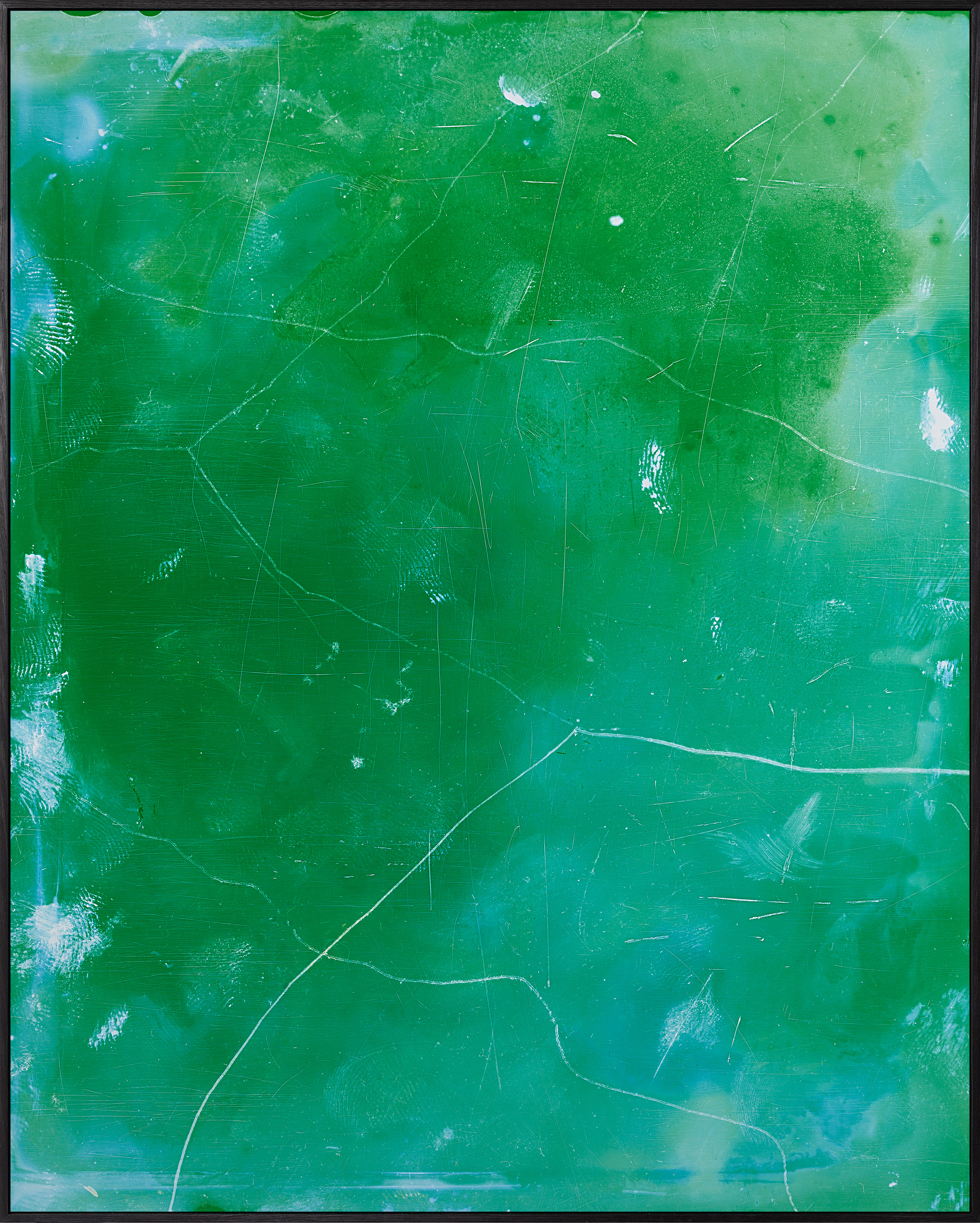
Encrypted, Lost then Found 2021
framed hand printed analogue C-type photographic print
112 x 140 cm
(Install image)
Grabowsky’s practice opposes traditional notions of photography as a tool to document reality. To do this he draws upon techniques derived from the improvisational practices of the 1920s Dadaists and the Surrealists’ foray into the unconscious and imagined realm. Grabowsky utilises the film negative in unconventional ways. Instead of using a camera to create an image, Grabowsky scratches, paints and engraves into the surface of the film negative to form an image, thus challenging the viewer’s perception and understanding of their relationship to visual cues and the production of images. These images of the psyche represent a projection of Grabowsky’s subconsciousness, depicted as a ‘chaotic’, parallel time and space.
framed hand printed analogue C-type photographic print
112 x 140 cm
(Install image)
Grabowsky’s practice opposes traditional notions of photography as a tool to document reality. To do this he draws upon techniques derived from the improvisational practices of the 1920s Dadaists and the Surrealists’ foray into the unconscious and imagined realm. Grabowsky utilises the film negative in unconventional ways. Instead of using a camera to create an image, Grabowsky scratches, paints and engraves into the surface of the film negative to form an image, thus challenging the viewer’s perception and understanding of their relationship to visual cues and the production of images. These images of the psyche represent a projection of Grabowsky’s subconsciousness, depicted as a ‘chaotic’, parallel time and space.
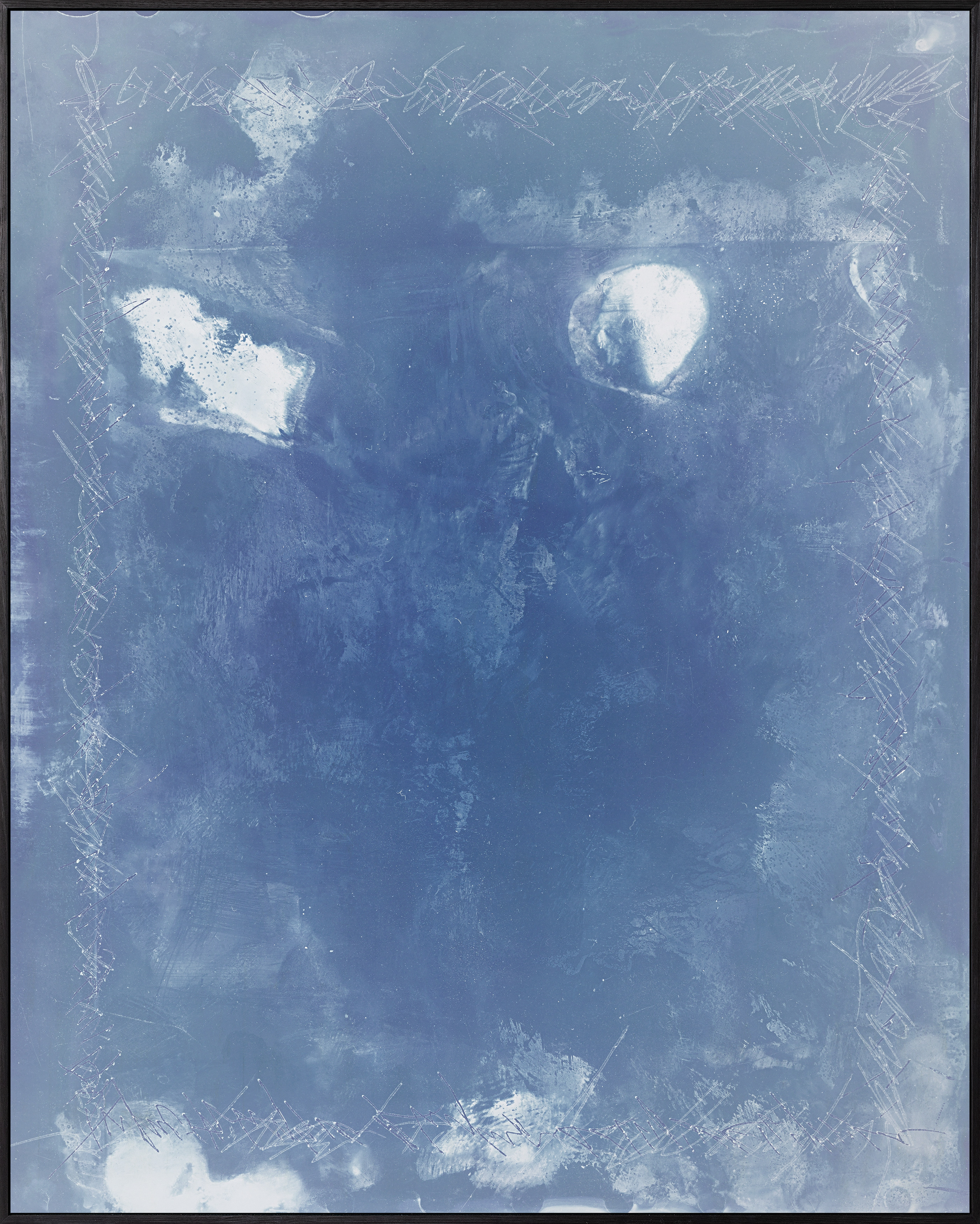
Supplements 2021
framed hand printed analogue C-type photographic print
48 x 60 cm
framed hand printed analogue C-type photographic print
48 x 60 cm
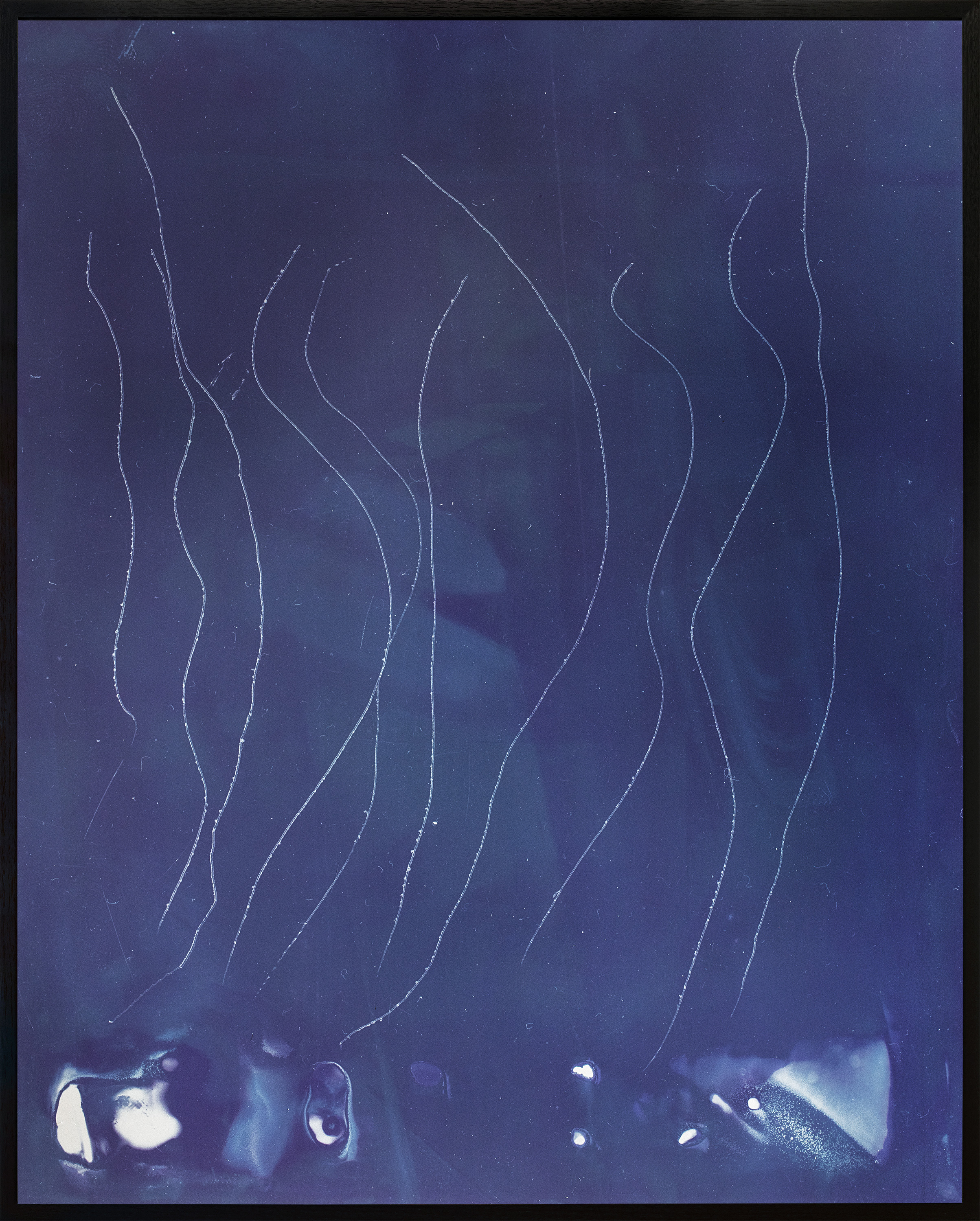
Transparency Leads to Epiphany 2021
framed hand printed analogue C-type photographic print
105 x 140 cm
(Install image)
On his travels, Grabowsky seeks spontaneous encounters to capture on film. These catalogued encounters are treated like ‘found objects’ to be re-purposed. Here the original image has been abstracted in the darkroom, transforming it into an entirely different image. Intricate, improvised markings have been merged with the original image, instilled within its surface. Grabowsky refers to these markings as a visual language that divorces photography’s seemingly intrinsic index to the natural environment, and instead locates it within its own identity and contemplation. These markings propose a meta-dialogue about the genre of image which they encompass. This particular image, for example, could be ironically linked to such genres, (or tags) as “street photography”, “photos of flowers” or “trendy images” etc…Grabowsky is fascinated by our relationship to these categories of image-genre and how they alter they way we see and perceive the “real” world.
framed hand printed analogue C-type photographic print
105 x 140 cm
(Install image)
On his travels, Grabowsky seeks spontaneous encounters to capture on film. These catalogued encounters are treated like ‘found objects’ to be re-purposed. Here the original image has been abstracted in the darkroom, transforming it into an entirely different image. Intricate, improvised markings have been merged with the original image, instilled within its surface. Grabowsky refers to these markings as a visual language that divorces photography’s seemingly intrinsic index to the natural environment, and instead locates it within its own identity and contemplation. These markings propose a meta-dialogue about the genre of image which they encompass. This particular image, for example, could be ironically linked to such genres, (or tags) as “street photography”, “photos of flowers” or “trendy images” etc…Grabowsky is fascinated by our relationship to these categories of image-genre and how they alter they way we see and perceive the “real” world.
